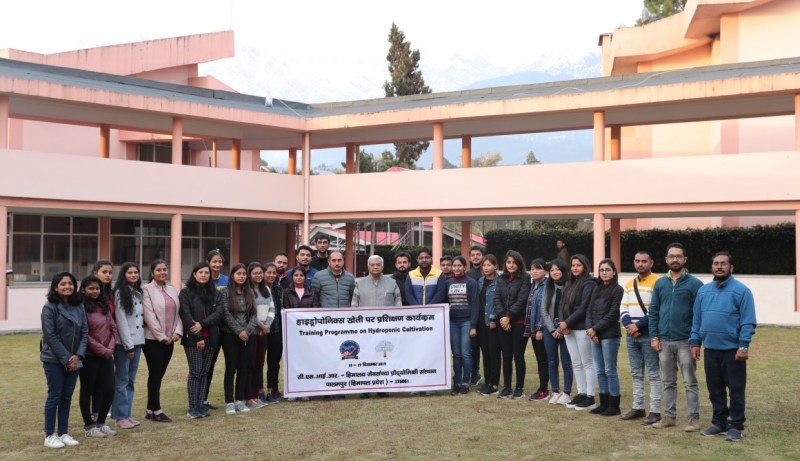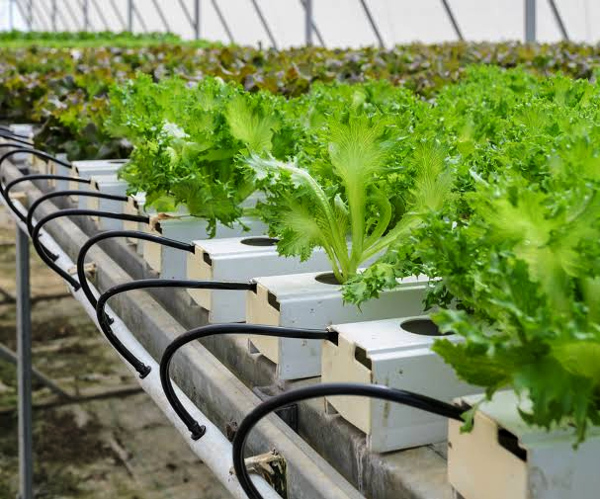New Delhi: With a rise in population, the demand for food is also rising and is expected to increase from 59% to 98% by 2050. Looking at this emerging demand, hydroponics may be seen as a better technique of agriculture. Keeping this in mind, the Council of Scientific and Industrial Research (CSIR) Institute of Himalayan Bioresource Technology (IHBT), Palampur, is determined to develop a small, low cost hydroponic system suitable for urban agriculture and small scale, said Dr. Ashish Warghat, Scientist, CSIR-IHBT.
The Institute organized a four-day training program on hydroponic cultivation systems. “Forty-three progressive farmers, unemployed youth, and students from Himachal Pradesh, Uttarakhand, Jammu, Manipur and Nagaland states participated in this programme. The participants were provided with technical knowhow and practical exposure of plant propagation in hydroponic systems,” said Dr Bhavya Bhargav, training organizer, CSIR-IHBT.

Dr. Warghat gave practical exposure for cultivation of herbs, spices, and floriculture crops under hydroponics systems. “Although the initial investment cost for setting up the hydroponics system is high, in the long run it will provide better returns to farmers,” he said.
Dr. Sanjay Kumar, Director of CSIR-IHBT, said knowledge of modern high-tech agriculture is the need of the hour, adding that it is essential to empower the youth to grow high value crops of demand under controlled systems.
During his talk, Dr Kumar said that hydroponics offers opportunities to young farmers to form startups for the production of nutrient-rich spices, and herbal and high value crops which have huge demand in the urban market.
“The practice assumes significance as rural regions in India are witnessing population shift in recent years due to animal menace and poor returns from traditional farming systems. This system is the perfect solution for growing plants in limited space,” said Dr Kumar.
Hydroponics is the technique of growing plants without soil by using a water solvent that consists of mineral nutrients. Dr Kumar said this system provides higher yield and economic returns compared to traditional agricultural practices because of increase in harvest cycles and balanced nutrient supply.
“Urbanization has led to high-density cities and scarcity of land. Hydroponic systems are engineered as a highly space and resource-efficient form of farming, and represent a considerable source of industrially grown produce,” he said.
Program participants were introduced to hydroponic systems and made aware of the water quality, growing systems, nutrient solutions, crop physiology, and crop protection.
Dr Rakesh Kumar, Principal Scientist and Programme coordinator, said hydroponic systems are not affected by weather, wild animals, or any of the other external biotic or abiotic factors. In addition to these benefits, hydroponic systems also use less water and result in greater efficiency.
Participants were also made aware of the elimination of use of artificial ripening agents, herbicides, and pesticides in hydroponic system, which help in creating nutritionally superior harvest of food products.
“The overall hydroponics system market is projected to grow from $8.1 billion in 2019 to $16 billion by 2025, at a CAGR of 12.1%,” Dr Rakesh Kumar said.
India Science Wire
Source:Vigyan Prasar
Image Courtesy: Jenco
You may also like
-
New Heat-Based Approach To Cancer Treatment Can Reduce Chemotherapy Doses
-
Scientists Take A Major Step Towards Unification Of Classical & Quantum Gravity
-
India Graphene Engineering and Innovation Centre (IGEIC) Under the Vision of Viksit Bharat@2047 Launched
-
New High-Performance Gas Sensor can Monitor Low Level Nitrogen Oxides Pollution
-
Antidepressant Drug can be Repurposed for Treating Breast Cancer
